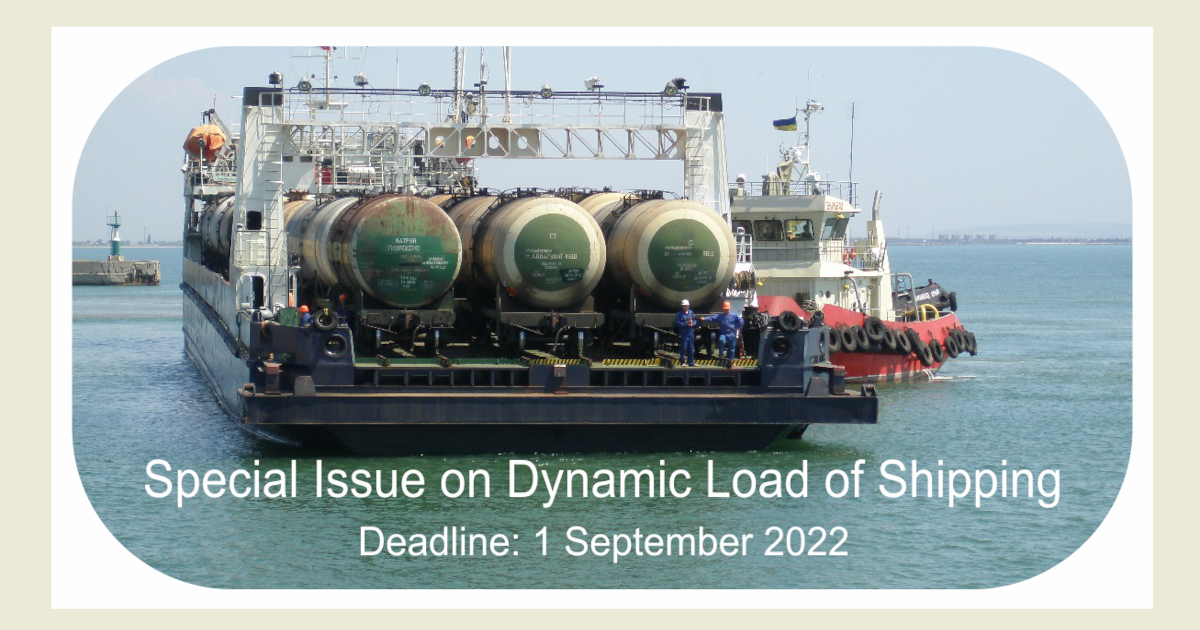Dynamic Load of Shipping
A special issue of Journal of Marine Science and Engineering (ISSN 2077-1312). This special issue belongs to the section "Ocean Engineering".
Deadline for manuscript submissions: closed (1 September 2022) | Viewed by 17125

Special Issue Editor
Interests: mechanical engineering; applied mechanics; computational methods; FEM; multi-body systems; vibration and noise reduction; mechatronics; CFD; optimization algorithms
Special Issues, Collections and Topics in MDPI journals
Special Issue Information
Dear Colleagues,
The maritime transport is playing an increasingly important role both in the intercontinental transport of goods or passengers and in the national transport of economically developed countries around the world. The faster development of ocean navigation than cabotage is a consequence of the international division of labour and trade. The demand for mineral raw materials, agricultural and other products is increasing; the vessels are mostly using connections on orthodromic secure routes. This Special Issue focuses on seagoing vessels and their transported cargo as complex dynamic systems interacting with the surrounding environment. In particular, advanced computational modelling of these systems is currently a prerequisite for their reliable, safe and environmentally friendly operation. Researchers from universities, research institutes and industry are cordially invited to send original articles on this topic, focusing on, for example, vessels transporting bulk carriers, piece goods, refrigerated and container ships, liquid cargo and more.
Prof. Dr. Václav Píštěk
Guest Editor
Manuscript Submission Information
Manuscripts should be submitted online at www.mdpi.com by registering and logging in to this website. Once you are registered, click here to go to the submission form. Manuscripts can be submitted until the deadline. All submissions that pass pre-check are peer-reviewed. Accepted papers will be published continuously in the journal (as soon as accepted) and will be listed together on the special issue website. Research articles, review articles as well as short communications are invited. For planned papers, a title and short abstract (about 250 words) can be sent to the Editorial Office for assessment.
Submitted manuscripts should not have been published previously, nor be under consideration for publication elsewhere (except conference proceedings papers). All manuscripts are thoroughly refereed through a single-blind peer-review process. A guide for authors and other relevant information for submission of manuscripts is available on the Instructions for Authors page. Journal of Marine Science and Engineering is an international peer-reviewed open access monthly journal published by MDPI.
Please visit the Instructions for Authors page before submitting a manuscript. The Article Processing Charge (APC) for publication in this open access journal is 2600 CHF (Swiss Francs). Submitted papers should be well formatted and use good English. Authors may use MDPI's English editing service prior to publication or during author revisions.
Keywords
- maritime transport
- dynamic load
- computational models
- bulk carriers
- container ships
- refrigerated ships
- liquid cargo ships
- reliable and safe operation
Benefits of Publishing in a Special Issue
- Ease of navigation: Grouping papers by topic helps scholars navigate broad scope journals more efficiently.
- Greater discoverability: Special Issues support the reach and impact of scientific research. Articles in Special Issues are more discoverable and cited more frequently.
- Expansion of research network: Special Issues facilitate connections among authors, fostering scientific collaborations.
- External promotion: Articles in Special Issues are often promoted through the journal's social media, increasing their visibility.
- Reprint: MDPI Books provides the opportunity to republish successful Special Issues in book format, both online and in print.
Further information on MDPI's Special Issue policies can be found here.





